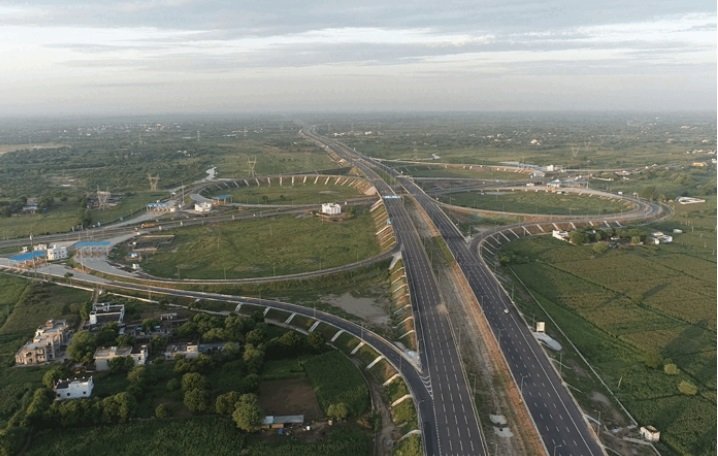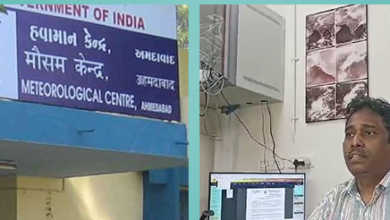Modi government kept the promise! India's largest expressway, costing 98000 crores, will pass through these cities of Gujarat

DELHI MUMBAI EXPRESSWAY: Will be India’s longest expressway. It will cover 93 PM speed terminals, 13 ports, eight major airports and cover 24 hours in just 12 hours. 1,386 km long expressway Rs. 98,000 crore at a cost.
Prime Minister Narendra Modi will inaugurate the first section of the Delhi-Mumbai Expressway on Sunday. The first section of the 1,386-km expressway is 246 km long. This section between Delhi-Dausa-Lalsot will make traveling from Delhi to Jaipur quite easy. After its construction, the five-hour journey from Delhi to Jaipur will be completed in just three and a half hours.
Travel will be done in just 12 hours
After the completion of this expressway, the travel time from Delhi to Mumbai will be reduced from 24 hours to 12 hours.
At what cost will the expressway be built?
The foundation stone of the Delhi-Mumbai Expressway was laid on March 9, 2019. The 246 km Delhi-Dausa-Lalsot section of the Delhi-Mumbai Expressway will cost Rs. Built at a cost of over 12,150 crores. With the commencement of this section, the travel time from Delhi to Jaipur will come down from 5 hours to around 3.5 hours. Apart from this, the government has also claimed to accelerate the economic development of the entire area. As for the entire project, the 1,386 km long expressway will cost Rs. 98,000 crore is being developed at a cost of Rs.
Feature of expressway
The Delhi-Mumbai Expressway will be the longest expressway in India. The expressway will also connect the 93 PM Gati Shakti Terminal, 13 ports, eight major airports and eight Multi-Modal Logistics Parks (MMLP) as well as upcoming greenfield airports like Jewar Airport, Navi Mumbai Airport and Jawaharlal Nehru Port. In this way it will increase connectivity between national capital Delhi and Mumbai.
Passing through six states namely Delhi, Haryana, Rajasthan, Madhya Pradesh, Gujarat and Maharashtra, this expressway will pass through economic centers like Jaipur, Kishangarh, Ajmer, Kota, Chittorgarh, Udaipur, Bhopal, Ujjain, Indore, Ahmedabad. Not only Vadodara, Surat. This will also improve linkages with centres.
The biggest advantages
The new expressway will reduce travel time between Delhi-Mumbai from around 24 hours to 12 hours and reduce the distance by 130 km. This will save over 32 crore liters of annual fuel and reduce carbon dioxide (CO2) emissions by 85 crore kg, which is equivalent to planting 4 crore trees. The National Highway Authority of India (NHAI) also plans to plant more than 40 lakh trees on highways.
Special arrangements for animals
The expressway will also include two large 8-lane tunnels. This expressway is the first in Asia and the second in the world to have an animal bridge (underpass) to facilitate uninterrupted movement of wildlife. It will have 3 flyovers and 5 air bridges (overpasses) with a total length of 7 km. The Delhi-Mumbai Expressway passes through various terrains like forests, dry land, mountains, rivers. A pavement design has been adopted for the Vadodara-Mumbai section for conditions such as heavy rainfall.
Around 55 such parts are being developed between Alipur in Sohna and Mumbai where fighter planes can land easily. The Delhi-Vadodara-Mumbai Expressway will not only facilitate travel, but in case of emergency, fighter planes will also be able to land on it. This road is being developed as a road runway. The stretch of about 296 km from Alipore to Dausa has about 10 sections where fighter planes can land easily.
The most important feature is also that 94 facilities i.e. Way Side Facilities -WSA have been constructed on the Delhi-Mumbai Expressway. Roadside facilities will include petrol pumps, motels, rest areas, restaurants and shops. There will also be a helipad on this expressway to enhance connectivity and rescue people in case of medical emergencies at these way-side facilities.




